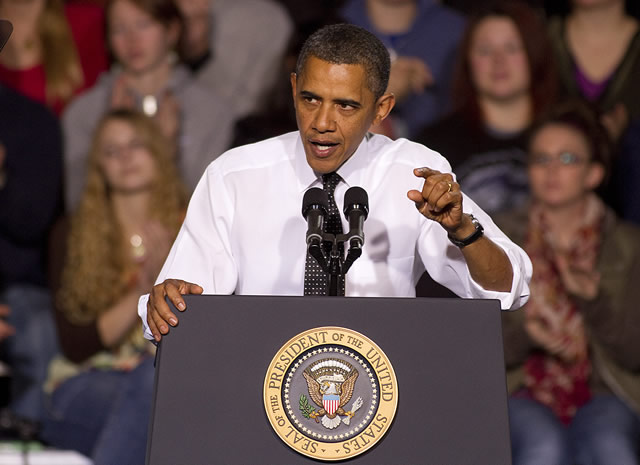Pushing Basket-Weaving College Loan Debt onto Working-Class Taxpayers
Lindsey Burke /

President Barack Obama delivers remarks on student loans at the Tivoli Events Center of the Aurarian campus in Denver on October 26, 2011. UPI/Gary C. Caskey
President Obama’s “blame conservatives” rhetoric was on full display yesterday as he described his plan to provide relief to students overburdened by loan debt that they voluntarily assumed.
“We can’t wait for Congress to do its job, so where they won’t act, I will,” Obama told a crowd of Denver college students yesterday afternoon.
The President’s plan includes limiting to 10 percent of discretionary annual income the amount of money lenders can require students to pay. It would also reduce from 25 to 20 the number of years students have to pay on their loans until they are forgiven completely. And all this would be accomplished by once again circumventing Congress.
The Administration’s plan to forgive all debt after 20 years shifts the burden of paying for college from the student—the person directly benefiting from college—to the nearly three-quarters of Americans who did not graduate from college.
It also penalizes the taxpayers who have worked hard to pay off their own student loan debt—and who are still making payments—by having to pay off the student loan debt of those who took out more of a loan burden than they could handle, in some cases, to earn a degrees of questionable market value.
And when it comes down to it, a major reason for tuition inflation over the years is government involvement in the first place. Pell grants have increased 475 percent, while the cost of college has increased 439 percent since 1982—faster than increases in the cost of health care—after adjusting for inflation. Federal subsidies insulate colleges from being remotely worried about spending money wisely or cutting costs. The Center for College Affordability and Productivity points out:
Universities and even many liberal arts colleges suffer from a huge bureaucracy that is not only expensive, but contributes to slow and often non-innovative decision making. It is not uncommon for schools to have more people working in an administrative capacity than serving as faculty members.
The President’s proposals would ultimately do nothing to mitigate the cost of attending college. Instead, limiting the number of years a student is eligible for federal subsidies, tying aid to merit, and encouraging states to put more course content online would go much further in popping the higher education “bubble” and reducing college costs.
